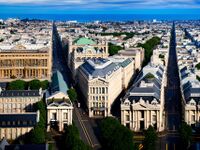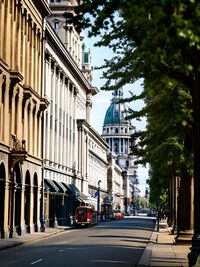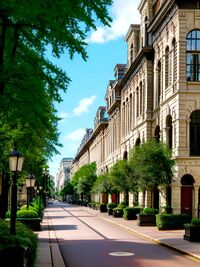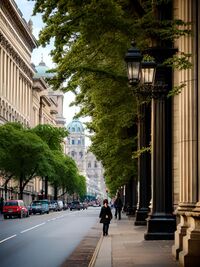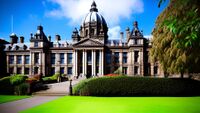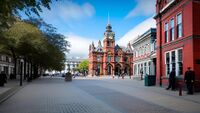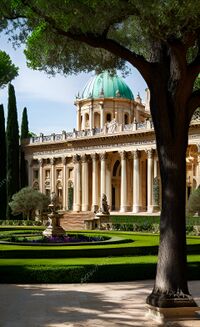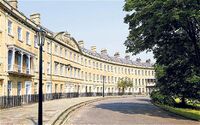Gallatin: Difference between revisions
No edit summary |
No edit summary |
||
| Line 147: | Line 147: | ||
|footnotes = | |footnotes = | ||
}} | }} | ||
'''Gallatin''' is the capital city and largest city of the Republic of [[New Gough Island]]. It is the second largest city and the anchor of the Greater Gallatin Area which includes the Gallatin City Region and part of the Parasides Island Region. The city has a population of | '''Gallatin''' is the capital city and largest city of the Republic of [[New Gough Island]]. It is the second largest city and the anchor of the Greater Gallatin Area which includes the Gallatin City Region and part of the Parasides Island Region. The city has a population of 987,000 people as of the 2023 estimate. The city is the most densely populated city in the country. Located in the northern area of the country which houses 84% of the national population in 20% of the land area. | ||
The city was founded in 1718 but not proclaimed capital of the country until 1870. The city is well known for its historic architecture and art scene. Gallatin and the Parasides Island as a whole is connected to the mainland (Gough Island) by the | The city was founded in 1718 but not proclaimed capital of the country until 1870. The city is well known for its historic architecture and art scene. Gallatin and the Parasides Island as a whole is connected to the mainland (Gough Island) by the 1 1/2-mile-long road and rail President Frank Berman Memorial Bridge. The city has a robust transit system connecting itself to the suburbs by commuter rail. Bus and street trams are the main features of the transit system. With a subway system under construction to improve transit in the city. The city has a network of freeways outside of the city limits. | ||
The city attracts the largest amount tourists to the country, with many arriving in the city to travel to the nature and rugged outdoors oriented vast South Area. On average, | The city attracts the largest amount tourists to the country, with many arriving in the city to travel to the nature and rugged outdoors oriented vast South Area. On average, 8-10 million tourists visit the city each year. For this reason, the city is called the Gateway to New Gough Island. Tourist attractions include: the several historic parks in the city, the National Museum of Art, Bernard Square, City Observatory, national monuments, and much more. | ||
==History== | ==History== | ||
Revision as of 14:48, 9 April 2024
Gallatin | |
|---|---|
Capital City and Region | |
From top to bottom: Gallatin seen from the City Observatory, State Street in Central City, Pinehurst Neighborhood, Conifer Ave in Central City, Gallatin City Hall, Bernard Square, National Museum of Art, Fenburg Park Neighborhood, Cava 3 Tram traveling down a street in the Central City | |
| Country | New Gough Island |
| Region | Gallatin |
| Government | |
| • Executive Mayor | James Parker |
| Area | |
| • Capital City and Region | 80 sq mi (200 km2) |
| • Land | 75 sq mi (190 km2) |
| • Water | 5 sq mi (10 km2) |
| • Urban | 380 sq mi (1,000 km2) |
| • Metro | 1,982 sq mi (5,130 km2) |
| Population (2023) | |
| • Capital City and Region | 987,000 |
| • Density | 13,160/sq mi (5,080/km2) |
| • Urban | 2,190,000 |
| • Metro | 2,410,000 |
| Demonym | Gellatiner |
Gallatin is the capital city and largest city of the Republic of New Gough Island. It is the second largest city and the anchor of the Greater Gallatin Area which includes the Gallatin City Region and part of the Parasides Island Region. The city has a population of 987,000 people as of the 2023 estimate. The city is the most densely populated city in the country. Located in the northern area of the country which houses 84% of the national population in 20% of the land area.
The city was founded in 1718 but not proclaimed capital of the country until 1870. The city is well known for its historic architecture and art scene. Gallatin and the Parasides Island as a whole is connected to the mainland (Gough Island) by the 1 1/2-mile-long road and rail President Frank Berman Memorial Bridge. The city has a robust transit system connecting itself to the suburbs by commuter rail. Bus and street trams are the main features of the transit system. With a subway system under construction to improve transit in the city. The city has a network of freeways outside of the city limits.
The city attracts the largest amount tourists to the country, with many arriving in the city to travel to the nature and rugged outdoors oriented vast South Area. On average, 8-10 million tourists visit the city each year. For this reason, the city is called the Gateway to New Gough Island. Tourist attractions include: the several historic parks in the city, the National Museum of Art, Bernard Square, City Observatory, national monuments, and much more.
History
Geography
Climate
| Climate data for City Observatory, Gallatin, New Gough Island, 1991–2020 normals, extremes 1900–present | |||||||||||||
|---|---|---|---|---|---|---|---|---|---|---|---|---|---|
| Month | Jan | Feb | Mar | Apr | May | Jun | Jul | Aug | Sep | Oct | Nov | Dec | Year |
| Record high °F (°C) | 80 (27) |
79 (26) |
77 (25) |
72 (22) |
64 (18) |
59 (15) |
54 (12) |
52 (11) |
58 (14) |
63 (17) |
68 (20) |
73 (23) |
80 (27) |
| Average high °F (°C) | 63 (17) |
61 (16) |
55 (13) |
47 (8) |
44 (7) |
42 (6) |
41 (5) |
41 (5) |
43 (6) |
48 (9) |
54 (12) |
58 (14) |
50 (10) |
| Average low °F (°C) | 50 (10) |
46 (8) |
42 (6) |
36 (2) |
32 (0) |
27 (−3) |
24 (−4) |
25 (−4) |
28 (−2) |
34 (1) |
41 (5) |
45 (7) |
36 (2) |
| Record low °F (°C) | 36 (2) |
32 (0) |
22 (−6) |
10 (−12) |
1 (−17) |
−9 (−23) |
−14 (−26) |
−3 (−19) |
4 (−16) |
12 (−11) |
24 (−4) |
31 (−1) |
−14 (−26) |
| Average precipitation inches (mm) | 3.71 (94) |
4.01 (102) |
4.28 (109) |
4.89 (124) |
5.14 (131) |
5.56 (141) |
6.23 (158) |
6.28 (160) |
5.53 (140) |
4.83 (123) |
4.38 (111) |
4.12 (105) |
58.96 (1,498) |
| Average snowfall inches (cm) | 0 (0) |
0 (0) |
0 (0) |
1 (2.5) |
4 (10) |
9 (23) |
12 (30) |
10 (25) |
10 (25) |
9 (23) |
4 (10) |
1 (2.5) |
60 (151) |
| Average precipitation days (≥ 0.01 in) | 9 | 10 | 12 | 12 | 13 | 14 | 15 | 16 | 15 | 14 | 12 | 10 | 152 |
| Average snowy days (≥ 0.1 in) | 0 | 0 | 0 | 1 | 4 | 7 | 10 | 9 | 8 | 7 | 3 | 1 | 50 |
| Source: New Gough Island Weather Service | |||||||||||||
Transporation
Culture
City Government
City Neighborhoods
Education
Economy
Sister Cities
Králowec, F.D., Morrawia (2000)
